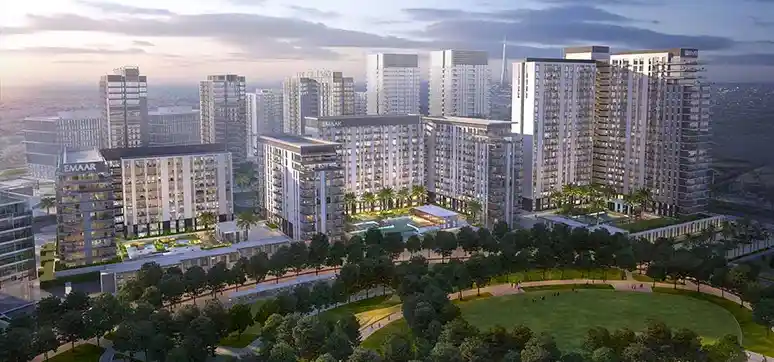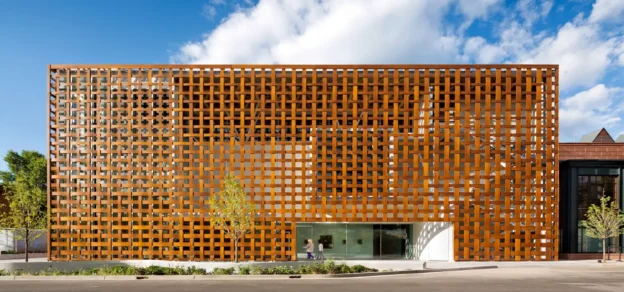What are the latest trends in cladding materials?
The current trends in cladding materials based in the UAE market, and I would say even globally, are fibre cement panels, aluminium panels, and solar panel façade cladding (photovoltaic glass panels) including timber and stone cladding. I believe that the increase in the utilisation of these materials over the years is highly driven by several core factors such as durability, design versatility, aesthetic appeal, and functionality.
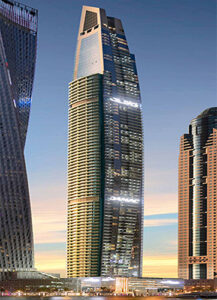
For example, fibre cement panels are fire and water-resistant, has good sound and heat insulation properties. In addition to that, it does not deteriorate with ultraviolet light and is eco-friendly and with the surge of sustainable building materials, creating a trend worldwide, more and more designers/ architects lean on these materials as an option.
Over the years, aluminium panels have been a trusted cladding ally of architects as it has never failed to give impressive results. It is durable, lightweight, can be thermally efficient and shaped endlessly in response to the building design. Of course, the ingenuity of the architect will greatly affect the extent of usage and the manipulation of the material to fit however ambitious a design will or can be. Predictably, it would be safe to say that this type of cladding material will remain in the market for many years.
With regards to solar panel façade cladding (photovoltaic glass panels), this type is rarely being used in the UAE. Although as designers we try to incorporate this type of cladding, however, it never progresses beyond concept design. Once the design goes on further to the scheme, detail design, and especially to tender, these items are always on the list of being value engineered. Perhaps it is not cost-effective or it could be that the application of new technology regarding this is not in line with the existing market trends in the architectural arena. Hopefully, one day we can enjoy this type of building efficiency and sustainability in the future that is end-user friendly, especially on the facility management side.
Nevertheless, I am a strong believer of painted plastered concrete and glass windows. Basically, if you can combine these two elements properly into your design, then you can be able to create a cost effective, aesthetically pleasing, highly sustainable structure that can last for many years and easy to maintain. As a guiding principle, I always make sure to provide effective, safe and quality design features for clients, fully understanding that nowadays, the market is highly price-conscious and demanding in terms of product quality, longevity, or if it comes to par with the regulatory codes imposed by building authorities in the government of that particular place or country and the like, as we are catering to a diverse clientele.
What are the major challenges in the industrial cladding segment in the Middle East?
 U+A creates an innovative and new residential typology for Dubai, that combines functional living with the aesthetics of a expansive landscaped podium
U+A creates an innovative and new residential typology for Dubai, that combines functional living with the aesthetics of a expansive landscaped podium
I can say that one of the major challenges of the industrial cladding segment in the Middle East, specifically here in the UAE is complying with the new UAE codes. Although I would consider this to be a very good initiative of the UAE government in preventing fire incidents. Rules and regulations pertaining to the suppliers, manufacturers, and installers of industrial cladding (as they are increasing in number) should be strictly implemented as negligence is very common. Cases of improper installation have caused various scenarios like rainwater leakage, detached cladding from the system, and worst is cladding falling to the ground secondary to strong winds and sandstorms.
Briefing some smart cladding technologies for sustainable buildings.
Smart cladding is the use of materials that is quite new to the market and helps with the energy efficiency and the sustainability of the building in terms of HVAC loads, water consumption, and electrical loads. Due to the new codes being implemented in the regions, especially in the UAE, other cladding materials pop up like perforated screens, mineral fibre panels, WPC panels to name a few.
What are the key factors to consider while designing and selecting cladding materials?
 The purpose built sales centre conceptualised by U+A will become a truly striking building on Sheikh Zayed road. The centre provides its customers a platform for unparalleled interactive experiences whilst learning about new developments
The purpose built sales centre conceptualised by U+A will become a truly striking building on Sheikh Zayed road. The centre provides its customers a platform for unparalleled interactive experiences whilst learning about new developments
From an architect’s point of view, key factors to consider are:
- Can it follow/perform the complexities of my design?
- Is it locally available?
- Is it economical or within the client’s budget? Because most of the projects start with a very ambitious concept and at the end, it will be value-engineered and ends up way too different from what you envisioned your design will be?
- Durability
- Geography where your building is located
- Local and international code compliance
- Constructability
- Aesthetics
What role does cladding play in controlling the internal environment?
The choice of cladding will greatly affect the internal environment and it depends on the type of building that you design or build. For example, in an office building, we usually consider more natural light to come in but less heat. This is the reason why most of the office buildings use the floor to floor glass cladding or panelling. To counter glare, we use vertical and horizontal louvers, perforated panels, and photovoltaic glass panels. For the hotels and other residential buildings, there is less glass panel usage due to building code, fire codes, and privacy. It can literally dictate the mode you want to achieve for a specific building function.
What is Rainscreen cladding and its advantages ?
Rainscreen cladding is a form of insulation for moisture resistance and rainwater seeping into your core walls in particular. It helps to protect your core walls against moisture. Nowadays, it has become an architectural façade cladding. Vented, vented and pressure, equalised and drained and vented are some types of rainscreen cladding to name a few. The advantages of using these types of cladding are:
-
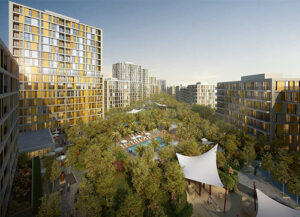
Midtown by Deyaar intends to create a community with a an unparalleled live and play lifestyle that incorporates high-end living with the natural surroundings of the leisure facilities. It adapts itself as an stand alone development that create a benchmark of community living with 27 total number of buildings. Midtown Community Cluster is another good example of a combination of paints, concrete and glass and good workmanship Simple installation means most of the suppliers can attach to the main structural walls with ease. They can work closely with façade consultants and structural engineers.
- Lightweight materials. They usually range from 4mm thick to 8mm thick sheets and weigh just less than 6 kg per square meter.
- It can decrease condensation on the building if done properly. That is why it is critical for the site architects and inspectors to monitor closely when installing otherwise it will defeat its purpose. Rainscreen, usually increases airflow and can manage moisture effectively.
- It can be easily removed and replaced due to its advanced fixing system. It will greatly help facility management in maintenance in the long run.
- It is very easy to use. These cladding can be easily bent and rolled to fit architectural details, façade ends, and joints.
- If you use rainscreen cladding, you can still achieve the aesthetic aspect of your design. For it to have a lot of colour ranges and can even request supplier, manufacturers for customised colours and join connections.
The current fire safety norms & standards and their effect on the cladding industry in the Middle East?
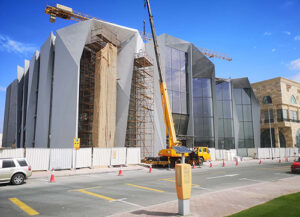
Due to fire occurring situation here in the Middle East (UAE to be specific), the UAE fire code has been revised to address this situation. I myself have experienced a massive fire in my building way back in 2011 in JLT. Where it only starts in a very small fire at the top of the building (maybe in the electrical room) but because the building façade is cladded with ACP (aluminum composite panels, the fire just spread so quickly and the fire department could not do anything but only protect the surrounding building and the assets below.
The norms now are all the new buildings that have been linked to the central monitoring facility by the fire department (civil defense authority) by incorporating BMS/ security rooms into the design. Also, all the products now for cladding have a strict testing and needs to pass the entire new requirement stated in the new fire code in the UAE. They have banned the use of all flammable insulation elements into the cladding.
Under the updated UAE fire code, consultants will be responsible for the overall operations and the lifecycle of a building, such as: acquiring the no objection certificate (NOC) from civil defense authorities; selection of approved material; contractor qualification; inspection during construction; and testing and commissioning works.
Now, all design consultants have this approved list of building materials to follow. It was given to us by the authority to follow, materials not listed here if we insist to use must go to a rigorous process to make it pass before we can actually use it.
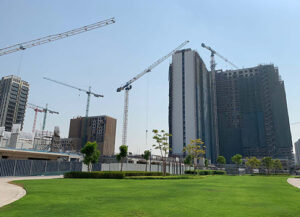
What are ventilated cladding energy-conserving façades?
Ventilated cladding is a method where cladding has a separation or an air gap from the main façade wall/structure. This helps prevent moisture buildup between the cladding and the main wall. This method will also help not to create a heat transfer from the exterior heat to the interior of the building does reducing energy consumption. Ventilated cladding is a form of energy-conserving façades as mentioned above.
What is the importance of fire-safe design, materials, and technologies?
This is very important. We are not only designing buildings and structure, but the safety of the endusers and the building itself to last its lifecycle. This also gives a sense of peace when you know that the building/structure that you design if safe for the end-users. We appreciate what the authorities have done because we do not need to second guess which building materials (cladding) to use for they have already provided us with the list of materials and suppliers that they have authorised or have accredited as safe here in the UAE to be specific.
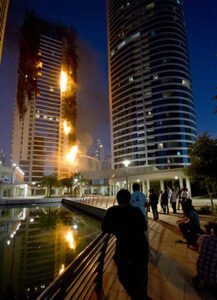
What is the market for the fire-resistant cladding materials and its way forward in the Middle East?
I think it looks really bright. Most of the cladding materials now in the market are complying with the fire codes and local building codes. And from what I see, cladding in the Middle East is a must due to the weather condition. Cladding not only makes the character of the building, but also serves as protection of the main structure from weather and other exterior elements that will affect the lifecycle of the building/structure.
What are the future trends for industrial cladding in the Middle East?
- Solar façade cladding panels
- Graphic light façade
- Perforated façade cladding
- Customised aluminium cladding
- Media mesh façade cladding
NOTE:
I hope one day, our scientists and manufacturers can come up with renewable energy that can be incorporated in the façade as a design feature specially water from the tanks that flow towards our faucets can be converted back into energy for the building. That is sustainable energy. Imagine it can power your toilet lights while taking a shower or what not.
